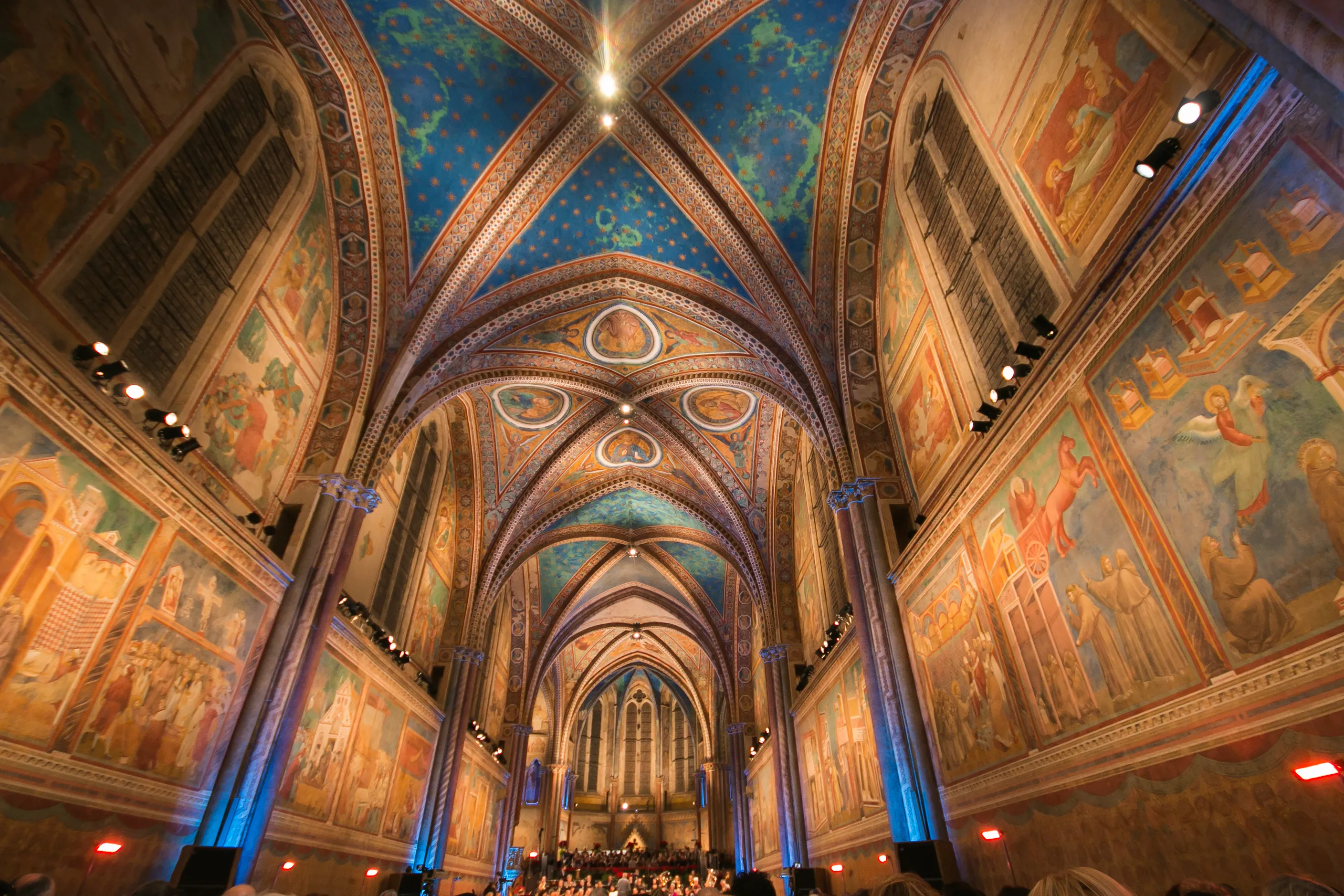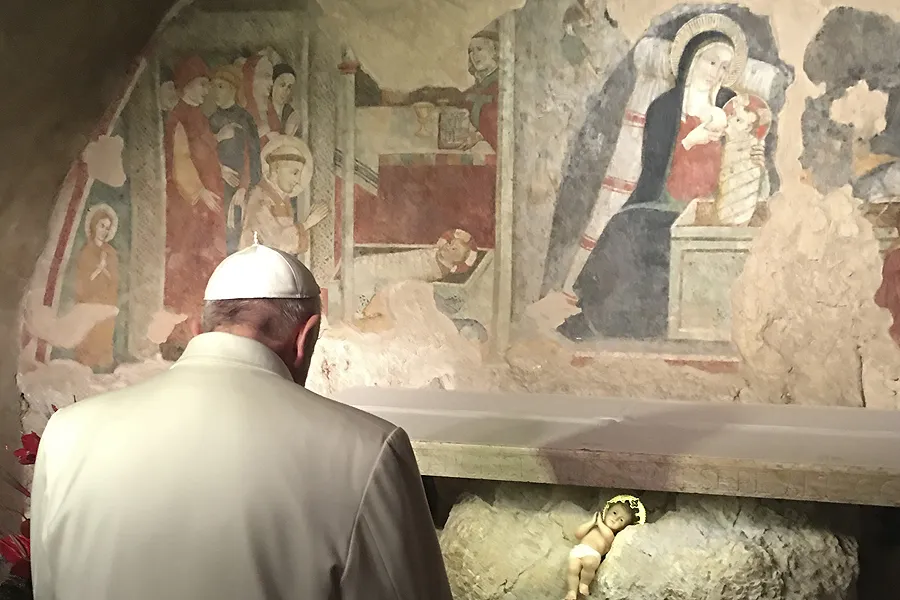
The crucifix has long been a central and most venerated Christian symbol, expressing a variety of beliefs and truths about the life, death, and Passion of Jesus Christ. Considering that it represents the torment and suffering of Christ, it is perhaps not surprising that crucifixes objects of ridicule and insults. This in fact often happens in schools in Italy.
“In Italy, there is a regulation, dating back almost a century, which provides for the display of the crucifix in classrooms,” explains jurist Filippo Vari, professor of Constitutional Law at the European University of Rome. And “although that law was approved during Fascism, even in the Republican era it was considered important, and was appreciated at a popular level.”
Despite this, it is not uncommon to read news about crucifixes being vandalized, desecrated, or mocked by pupils and students. Probably, given the excuse of their young age, they may “not know what they do” (Lk 23:34), as Jesus said on the Cross, invoking forgiveness for his executioners.
But Adel Smith, founder of the Muslim Union of Italy, was about 40 years old when, as a guest on the longest-running political talk show on Italian television’s number one channel RAI1, described the crucifix as “a little cadaver hanging from two sticks.” For many years this gentleman of Scottish and Egyptian origin, who grew up Catholic then converted to Islam, led a high profile battle against the display of crucifixes in public places in Italy, such as schools and courts.
However, many voices of the Italian Muslim community, mostly consisting of immigrants, criticized his polemics as well as his stunts, such as throwing a crucifix out of the window of the hospital where his mother was hospitalized.
Nevertheless, the longest-running battles over crucifixes in Italian classrooms are undoubtedly legal ones. And a recent ruling has caused an uproar in the media, and is likely to spark new clashes rather than promote a truce.
The dispute was initiated twelve years ago (the Italian justice system is not known for speed) by Franco Coppoli, a teacher at a vocational high school in Terni, not far from Rome. He regularly removed the crucifix from the classroom wall before giving a lesson. The school’s headmaster punished him with a 30-day suspension from work. Coppoli invoked freedom of teaching and conscience, but he did not refrain from insulting the headmaster. The first court ruling proved the headmaster right. The Court of Appeals, the second level of Italian justice, also rejected Coppoli’s appeal against the suspension.
But he did not relent. On September 9, 2021, the Supreme Court of Cassation, Italy’s highest court, also ruled on the case. The punishment imposed on Mr. Coppoli was tossed out. But his claim for damages was not upheld. The crucifix, as the ruling explains, is linked to “the lived experience of a community and the cultural tradition of a people”; so hanging it in schools does not go against the principles of secularism.
The novelty, however, is that the presence of the crucifix in classrooms is no longer mandatory, although not forbidden. It is up to the school community to decide whether or not to hang the crucifix on the wall, seeking a solution respectful of those who may not agree. In addition, the crucifix could also be flanked by symbols of other religions professed by some of the students, while seeking a reasonable accommodation between any differing positions.
This ruling, according to Filippo Vari, “raises many doubts and many problems,” because “it does not disagree with the Strasbourg court, but with the position of Italian administrative judges.”
The reference is to another case that caused much talk in the past, the famous “Lautsi case,” named after the Finnish-born mother who in 2002 turned to the Veneto Regional Administrative Court because her children’s school rejected her proposal to remove crucifixes from classrooms. On that occasion, Vari recounts, “both the TAR and the Council of State [the Italian administrative court of appeal, NDR] established that the compulsory and exclusive display of the crucifix is compatible with the Italian Constitution, since it is not only a religious symbol but also a cultural one.” In particular, “the Council of State observed that while the crucifix may have a religious significance for believers, it does not have a discriminatory value for non-believers.”
But Ms. Lautsi then turned to the European Court of Human Rights, a court established in 1959, based in Strasbourg, France, after the “European Convention for the Protection of Human Rights and Fundamental Freedoms,” signed by 47 member States of the Council of Europe.
In 2009, the first ruling by a chamber of the European Court of Justice found in favor of Ms. Lautsi. But the Italian government appealed, supported by many other European states and non-governmental organizations. Finally, in 2011, the Grande Chamber, the highest level body of the European Court, overturned the previous ruling with the consensus of 15 out of 17 judges: displaying the crucifix in schools does not violate the freedom of education of non-believing parents.
The news made so much noise that even the then-director of the Vatican Press Office, Fr. Federico Lombardi, made a statement: the European court, in his opinion, recognized not only that “the culture of human rights must not be placed in contradiction with the religious foundations of European civilization,” but also a principle of “subsidiarity”. In other words, every country has the right to evaluate the significance of religious symbols in its own cultural history, as well as the place of their display.
In essence, Filippo Vari further explains, “The European Court of Human Rights has recognized that in Europe there is no single model of relations between public power and religion. This is also said by an authoritative American scholar Joseph Weiler, speaking of countries that ‘see no wrong in a religious, or religiously rooted, self-understanding of nation and state, and in a public space more or less replete with state-endorsed religious symbology…’”
It is noteworthy to point out that Weiler, a distinguished Jewish jurist and professor at New York University, represented the governments of Armenia, Bulgaria, Cyprus, Greece, Lithuania, Malta, Russia and San Marino against Ms. Lautsi in 2011.
“In Europe,” Vari underscores as an expert in constitutional law, “there are countries where the Head of State is also the head of the Church, like the United Kingdom. Let us think of Ireland, whose Constitution opens ‘in the Name of the Most Holy Trinity, from Whom is all authority and to Whom, as our final end, all actions both of men and States must be referred’. Let us think of Malta, whose Constitution states that ‘the religion of Malta is the Roman Catholic Apostolic Religion’ and ‘the authorities of the Roman Catholic Apostolic Church have the duty and the right to teach which principles are right and which are wrong…’”
When Veneto’s Regional Administrative Tribunal rejected Ms. Lautsi’s request to remove crucifixes from schools in 2005, it also stated that “we are living in a time of tumultuous encounter with other cultures and, in order to prevent it from turning into a clash, it is essential to reaffirm our identity, even symbolically…”
Sixteen years later, the encounter with other cultures and religions in Italy has become even more tumultuous. Nevertheless, Professor Vari says, “I think that public opinion in Italy is overwhelmingly in favor of displaying the crucifix. Italian history has been intertwined with that of Christianity for thousands of years, as can be seen by visiting thousands of squares in our country. And I would say that almost every Italian is fully aware of this, as well as of the fact that in order to dialogue with others it is necessary to be aware of one’s own history and identity.’”
However, what is clear for the professor is not so evident to others. It is not by chance that Lautsi and Coppoli belonged to the Union of Agnostic, Atheists and Rationalist (UAAR). A few years ago, the UAAR launched a polemical campaign for the removal of crucifixes from public buildings under the motto ‘let’s de-crucifix Italy’. This did not prevent an Italian Catholic newspaper, a few years ago, from giving the UAAR’s honorary president, cartoonist Sergio Staino, a regular column every Sunday for his strange re-reading of Jesus in a very questionable and political way.
The last point is that following the September ruling by the Supreme Court, the wall of a school classroom may contain symbols that, unlike the crucifix, have no history in Italian culture. It will be interesting to see if the vandals will also have the courage to offend other religious symbols, including Muslim ones, as Islam has much less tolerant adherents.
In any case, Filippo Vari says diplomatically, “the Court of Cassation’s ruling has the merit of highlighting how the display of religious symbols can be a moment of encounter and dialogue between different religions and cultures. But it seems to me that the Court of Cassation has exceeded the boundaries of the role of the judiciary Italian system, to indicate a solution that should instead be identified by the legislature”. That’s why in conclusion, “it would be important for Parliament to intervene to resolve this issue with a law.”
If you value the news and views Catholic World Report provides, please consider donating to support our efforts. Your contribution will help us continue to make CWR available to all readers worldwide for free, without a subscription. Thank you for your generosity!
Click here for more information on donating to CWR. Click here to sign up for our newsletter.









Satan hates the Crucifix.
Muslims hate the Crucifix.
Atheists hate the Crucifix.
Protestants hate the Crucifix.
Pagans hate the Crucifix.
Jews hate the Crucifix.
Of course they want to get rid of it.
It reminds them of their utter defeat.
And up to date modernist Catholics hate the crucifix too.
I would say that you are more likely to find a crucifix in an Italian school than in the local parish church, but in this case, I’d say they’d prefer something more inclusive.
The Cross offends many none believers, as it confronts evil in bearing witness to the Truth, the essence of ‘love’ of neighbor, and in doing so often antagonizes the sensibilities of innate knowledge known within the human heart. While symbols of other religions by comparison do not.
The Cross, a symbol of Jesus Christ for us Christians is far more than a symbol of ‘love’ as it symbolizes His Love given in obedience to His and our Fathers Will, in the serving of the Truth. The serving of the Truth (In all situations) is Love, and to know Jesus Christ, this must be truly understood.
“ God is spirit, and his worshipers must worship in the Spirit and in truth”
Sadly, self-proclaimed Catholics cannot even call to account the Elite who have abused His Holy Name in the ongoing breaking of the Second Commandment
“Thou shalt not take the name of the Lord thy God in vain”
kevin your brother
In Christ
Your posts are always a pleasure to read Kevin.
Thank you, Catherine, for your welcomed encouraging comment
kevin your brother
In Christ
In conjunction with my post above
The ongoing collusion with the breaking of the Second Commandment defines the reality of the Church today. As our hearts have become coarsened in forgetting the reality of the one God who we are meant to serve. “Our Father who art in heaven Hallowed (sacrosanct, worshipped, divine, inviolable) be thy Name” Our most fundamental belief is that God’s Word (Will) is Inviolate, and sits at the base of all the Sacraments. He cannot contradict Himself; this belief is vital to the intelligibility of faith and life. Without it, the concept of truth loses all meaning.
The present blasphemous Images of divine Mercy must be destroyed as they are an affront to God born of Nationalist Pride and those who would pacify the powerful.
Then Abraham said, “May the Lord not be angry, but let me speak just once more. what if the number of the righteous only ten can be found there?”
He answered, “For the sake of ten, I will not destroy it.”
It appears that we cannot find one righteous (Honest) man on this site (Or any other for that matter) willing to openly bear witness to the Truth HOW SHAMEFUL ..V..
“But whoever denies Me before men, him I will also deny before My Father who is in heaven”
Please consider continuing this theme by the link
https://www.catholicworldreport.com/2021/11/02/tradition-and-traditionalism/#comment-285137
kevin your brother
In Christ
Fr JSB summed it up well: it’s the ultimate sign of the world, the devil and the flesh’s defeat,! It’s also a powerful indicator that those persons raging against crucifixes are probably demonic oppressed or even possessed!